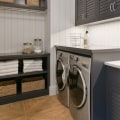Painting your home can refresh its appearance, increase its value, and enhance your overall living experience. However, the process of painting—whether it’s the interior or exterior—often raises practical concerns, one of the most common being: Can you live in a house while painting? The answer to this question largely depends on the scope of the project, the methods being used, and the precautions taken to ensure a safe and livable environment during the painting process. This guide explores the factors to consider when deciding whether to stay in your home while it's being painted and provides tips on how to do so comfortably and safely.
Scope of the Painting Project
The first factor to consider is the scope of the painting project. Are you painting a single room, the entire interior, or the exterior of your home? Smaller projects, such as repainting a bedroom or home office, typically allow for homeowners to remain in the house with minimal disruption. In these cases, you can move furniture to other areas and limit your time in the room being painted, making it relatively easy to continue living in the house without much inconvenience.
On the other hand, if you're painting multiple rooms or the entire interior, it may become more challenging to stay in the home, especially if there is furniture to move, floors to protect, and extensive preparation work. In larger projects, some homeowners opt to stay elsewhere for a few days or arrange the painting to be done in phases to make certain parts of the home accessible.
Paint Fumes and Air Quality
One of the main concerns when painting and staying in the house is the impact of paint fumes on air quality. Traditional oil-based paints and even some latex-based paints can release volatile organic compounds (VOCs) that may cause headaches, dizziness, or respiratory irritation, particularly in enclosed spaces with poor ventilation. Prolonged exposure to these fumes can be uncomfortable and, in some cases, hazardous to your health.
Fortunately, low-VOC and no-VOC paints are now widely available, offering a safer alternative for indoor painting projects. These environmentally friendly paints emit fewer harmful chemicals, making it more feasible for homeowners to remain in the house while the painting is being done. However, even when using low-VOC paints, it’s crucial to ensure proper ventilation by opening windows, using fans, and taking breaks outside of the painted areas to avoid prolonged exposure to any residual fumes.
Managing the Disruption to Daily Life
Staying in your home during a painting project can disrupt your daily routine, especially if the painters need access to frequently used areas like the kitchen, living room, or bathrooms. While it’s possible to continue living in the house, you’ll need to plan around the painting schedule to minimize disruptions. This could involve temporarily moving into a guest room or rearranging your schedule to spend more time out of the house during the day.
If you have children or pets, managing their safety and comfort during the painting project is also important. Kids and pets are naturally curious and may be drawn to wet paint, ladders, or tools, increasing the risk of accidents. Consider designating safe areas where they can stay while the work is being done, and ensure that any hazardous materials are kept out of reach.
Phased Painting Approach
One way to make living in your home during a painting project more manageable is by adopting a phased approach. Instead of painting the entire house at once, work with the painting crew to divide the project into sections, focusing on one or two rooms at a time. This allows you to use the remaining parts of the house while the painting is being done in the designated area. Once the paint dries in one section, you can move furniture back and use the space while the next phase begins.
This method is particularly useful for interior painting projects, as it reduces the amount of disruption to your living space. It also gives the paint more time to dry and the fumes to dissipate, making the home more comfortable for daily living during the process.
Consideration for Exterior Painting
If you’re having the exterior of your house painted, the impact on your daily life will generally be less disruptive than an interior project. You can typically stay inside while the painters work outside, although noise from ladders, scraping, and power washing may still cause some inconvenience. The most significant consideration for exterior painting is ensuring that windows and doors are properly sealed to prevent fumes from entering the house. If exterior work is being done on windows or entryways, you may need to use alternate doors or temporarily avoid certain rooms.
Precautions for Staying in the House During a Paint Job
To stay in your home safely and comfortably while it’s being painted, consider taking the following precautions:
- Proper Ventilation: Open windows and doors to promote airflow, and use fans to circulate fresh air and reduce fumes.
- Designate Safe Spaces: Set up areas where you can relax and go about your daily activities without interference from the painting project.
- Plan for Temporary Discomfort: Depending on the size of the project, you may need to adjust your routine temporarily, such as cooking meals in a different part of the house or setting up a makeshift office in another room.
- Work with Professionals: Hire professional painters who can work efficiently and use the safest products for your project. Just like you’d rely on All County Roofing for expert roofing services, partnering with experienced painters ensures a smooth and timely process with minimal disruption.
Conclusion: Can You Live in Your House While Painting?
In conclusion, whether or not you can live in your house while painting depends on the scope of the project, the type of paint used, and how well you manage the temporary inconveniences. For smaller or phased projects, staying in the home is often feasible with proper planning. However, for larger or more extensive painting jobs, it may be worth considering staying elsewhere for a few days to avoid fumes and disruptions. By working with professionals and taking necessary precautions, you can ensure a successful painting project while maintaining a comfortable living environment.






